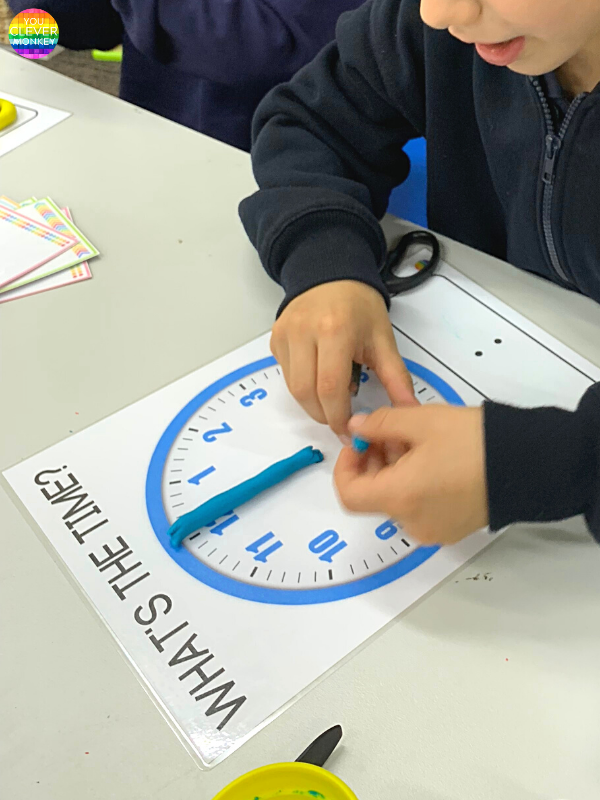More teaching ideas and printable resources to help you teach the how to tell time to the quarter hour.
Teaching young children to tell the time correctly takes time, if you'll pardon the play on words... but honestly it does! And lots and lots of practice making time different ways.
By the end of Year 1, the Australian Curriculum tells us children should be able to tell time to the half hour and, then, to the quarter hour (to/past) by the end of Year 2.
You can read this earlier post on how I introduce the concept of time and start teaching time looking at hour time and half hour time to begin with. With this post, I want to focus more on telling time to the quarter hour.

When teaching time, I will program the unit to follow on from looking at fractions in math. The children then have a better understanding of whole, half and quarters leading into our unit on time.
I've also found it helpful if you have done some skip counting before hand too so children understand that counting by fives makes learning how to read an analogue clock much easier.
I always start teaching time using the just the hour hand to tell the time.
I can't remember what PD session I went to that I picked up this gem of information from but it makes sense and helps children see the passing of time without the distraction of the minute or second hand. To often when telling time is taught with both hands from the start, children will move the minute hand but insist the hour hand stays pointing directly at the number.

When they're ready, I introduce the minute hand.
To do this, I draw lines with a whiteboard marker on our classroom clock in front of the whole class to show half. I do the same with quarter past but colour in the 1/4. I repeat it for 3/4. This is where the minute hand moves within each hour. I do similar when introducing elasped time later.
To do this, I draw lines with a whiteboard marker on our classroom clock in front of the whole class to show half. I do the same with quarter past but colour in the 1/4. I repeat it for 3/4. This is where the minute hand moves within each hour. I do similar when introducing elasped time later.
We talk about the positions of both hands depending on the time. They already know the positioning of the hour hand and then we practice making the correct time using both hands.
During our mental maths warmup, I give every child a small mat with both a blank analogue and digital clock displayed.
We use them to practice drawing the correct time - putting the hour number first in our digital clock then followed by the minutes, making our hour hand and minute hands different enough to be distinguished between.
We use them to practice drawing the correct time - putting the hour number first in our digital clock then followed by the minutes, making our hour hand and minute hands different enough to be distinguished between.

I still start with time to the hour and then add in half-past time. Then I introduce quarter past time and then once they become more confident with those three different times and the positions their clock hands sit on an analogue clock, I introduce quarter to time.
Even as Year 2s my class loves using playdough! Knowing this will always improve engagement, I made up a series of time cards for my children to make using their playdough.
I still give every child in my class their own container at the start of each school year.
The time cards are a mix of different times - to the hour, the half hour, quarter past and quarter to time.
The time is given in written form and the children then need to make the correct time on both the analogue and digital clocks on their mats.

This activity is a replica of our mental math routines which we do at the start of our lessons when we first begin our unit on time but the playdough helps to engage most students being so tactile.
This was such a hit as they can also work at their own pace. Look at the cards, make the time then flip the card over to check the clocks on the other side to see if they were correct.
Another popular activity from our math centres during our look at time were these make time mats.
The children loved that the spinners determined the time they had to write. It was just another way to provide my class with more practice at writing time in different ways.

TAKE A LOOK AT ALL OUR TELLING TIME RESOURCES
ALSO AVAILABLE FROM OUR TpT STORE
This is a digital product, no physical item will be posted to you.


